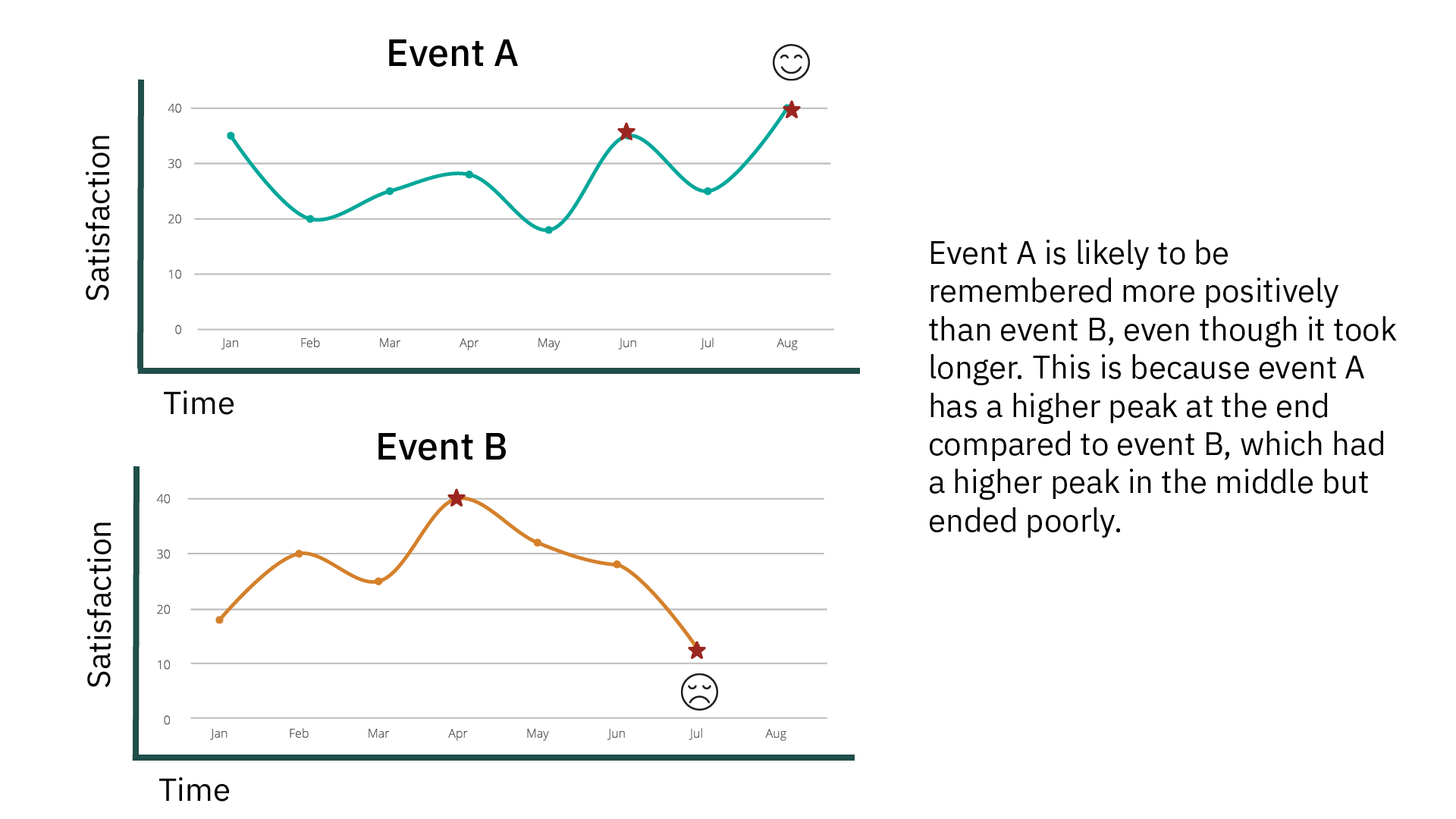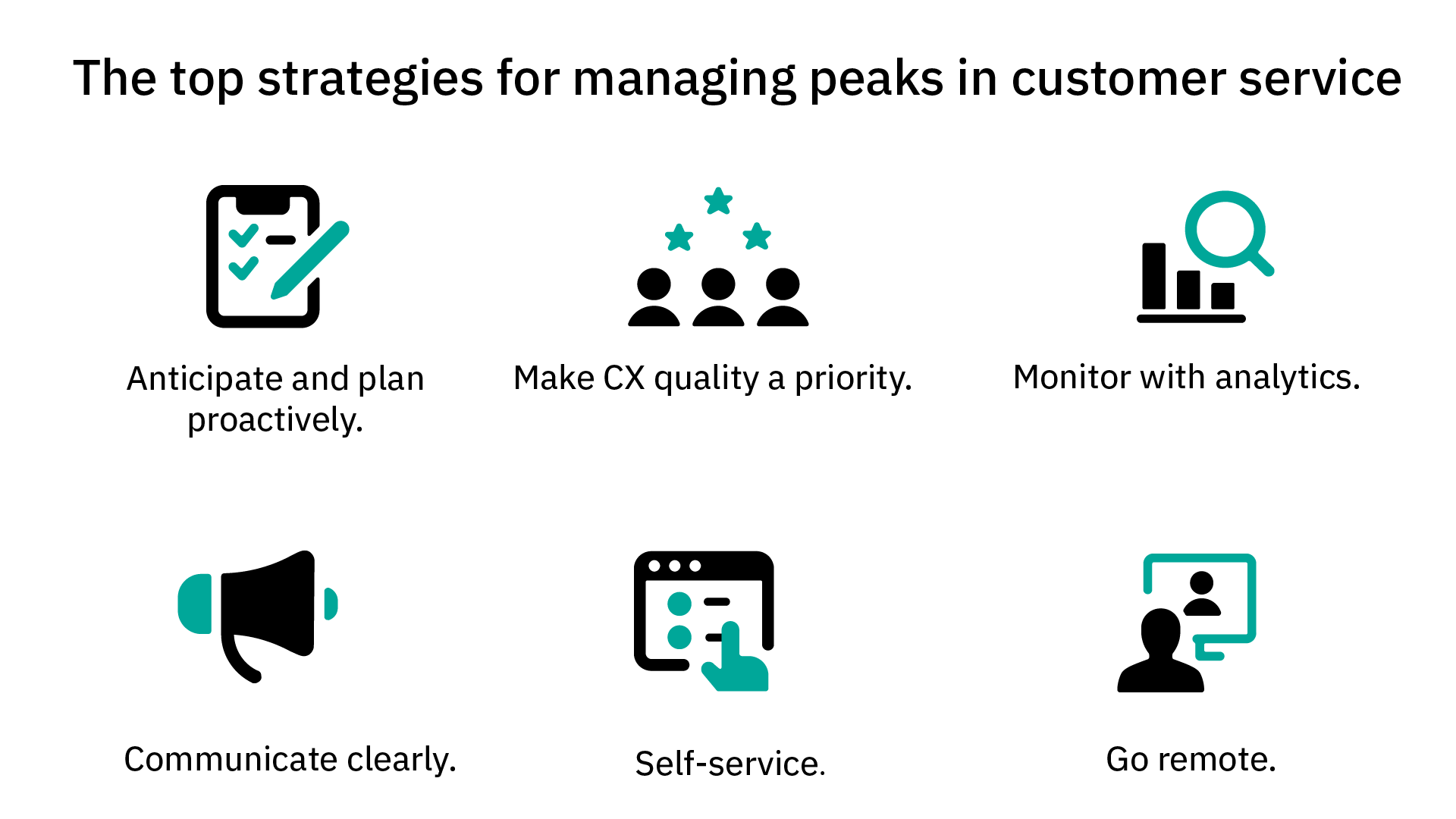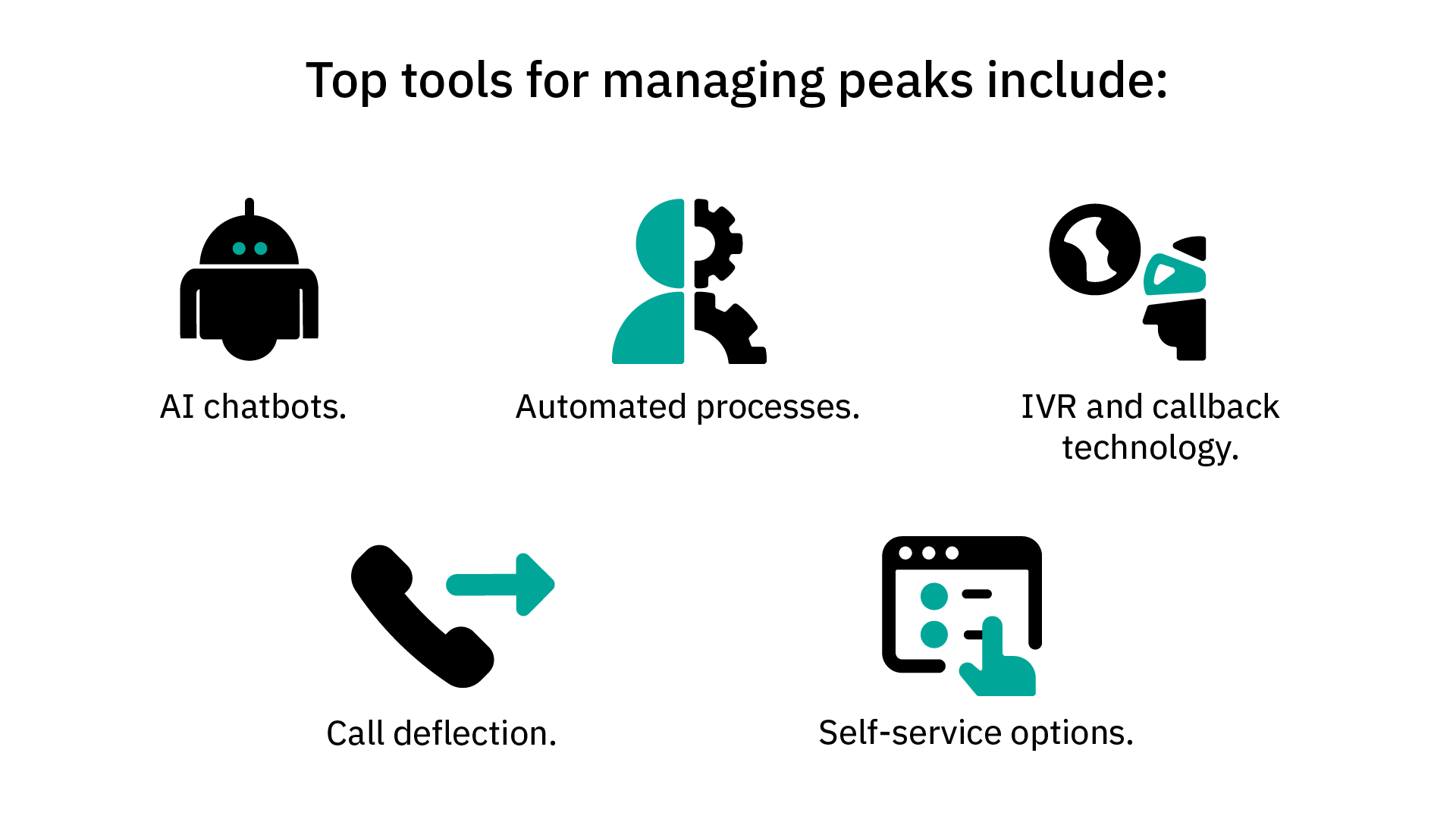How to manage peaks in customer service?

Becoming a pro at handling peaks in customer service can seem like a daunting task for even the most seasoned professionals. In customer service, this is often the be-all-end-all of ensuring brand loyalty and creating a positive awareness of your business. When times are busy, your consumers still want to feel taken care of - it’s your responsibility to do whatever you can to make sure that’s the case.
A brief recap.
Peaks in customer service are periods of increased activity and demand on customer service teams. These can be related to seasonal changes, product launches, or other special events. They can lead to higher stress levels for employees, longer wait times, and decreased efficiency overall.
Managing peaks in customer service can be a challenge, but there are a few strategies that can help, from advanced planning to the introduction of helpful technologies that take the strain off of your team.
What is the peak-end rule?
The peak-end rule is a psychological principle developed by Daniel Kahneman that suggests humans remember experiences based on peaks and endpoints. This means that people will remember the peaks (positive or negative) as well as the final moments of an experience. Companies should take this into account when planning for surges in customer service, ensuring that individuals have positive experiences throughout and memorable peaks that they will remember. Let’s take two events and see how the peak-end rule applies to them.
Event A:
A customer calls in to check an issue they’re having with an outstanding payment on their phone bill. They wait on hold for 6 minutes, before speaking to an agent who promptly answers their questions, offers to facilitate the transaction, and finishes the conversation by apologizing for the delay and asking whether there’s anything else they can do to help.
Event B:
The same person calls a different provider with the same issue. They are instantly redirected to a chatbot that answers their questions, but cannot make the payment for them and instead finishes the conversation by simply sending a survey.
While there are evidently some issues with the customer journey in both scenarios, according to Kahneman’s peak-end rule, the person in Event A is more likely to remember it as a positive experience because of the agent’s helpful behavior at the end of the interaction. If the chatbot in Event B had been better programmed or was empowered with AI to simulate a more compassionate conversation, the result may have been different.
There are two lessons here. Firstly, that excellent peak management does not rely on one single solution. All implemented strategies have the power to positively impact the customer’s sentiment, provided they are well-designed and thought through. Secondly, people are likely to remember peaks in customer service experiences, so businesses should endeavor to make the process of solving queries not only as quick as possible, but enjoyable at every stage.

What are the top strategies for managing peaks in customer service?
There are many ways you can approach creating a peak management plan. They include, but aren’t limited to, the following:

Anticipate and plan proactively.
Companies should anticipate peaks in customer service in advance and create a plan to manage them. Having a plan in place can help avoid stressful situations, panicked decisions, and frustrated callers and team members, because everyone is aware of how to approach the situation. Using historical data, you can also predict when the greatest volume increases will come. For example, if your company launches new products every holiday season, your CX team should begin preparing for the added volume of inquiries before the rush begins.
Make CX quality a priority.
When organizations focus on providing high quality customer service even during volume surges, they leave callers even happier than during periods of normal strain. Though expectations have risen in recent years, and closeness with brands is paramount, consumers appreciate when they receive thoughtful, helpful, and caring solutions to their issues, especially when they are pressed for time or in a crisis situation.
Monitor with analytics.
Analytics tools can help businesses identify areas of improvement and adjust strategies accordingly. By taking advantage of these tools and historical data, you can better understand consumer behaviors and patterns, and learn how to manage them more effectively. Tools such as Transcom’s business intelligence dashboards can provide real time data and insights upon which you can make data-driven decisions.
Communicate clearly.
People like to know what’s going on, even if the news isn’t great or if they’re asked to wait a little longer for a resolution. By communicating with customers during more intense periods, businesses can ensure their consumers understand any changes in service policies or processes. This could include informing them of increased wait times and providing alternative ways to contact customer service representatives. It’s also key to communicate well internally with your team to avoid stress and overload of work during peaks in customer service.
Self-service.
Increasingly, people are looking for solutions to their issues on their own without the need of help from the brand. Businesses should consider providing customers with self-service options, such as chatbots or automated processes. Not only does this help reduce wait times, it ensures those calling in can get the help they need quickly, and may even present a more convenient and comfortable experience for certain individuals.
Go remote.
Consider leveraging remote teams to provide additional support and expertise, especially during peaks in customer service. Not only does going remote expand your potential market reach and linguistic capacity, but it can provide a plethora of other benefits which we’ll talk about in more detail later on.
Our most recommended course of action, however, is to partner with an experienced CX provider, who will be able to analyze your current operations and advise on where you can streamline or augment your customer support.
The importance of good training.
Your people are your greatest strength. Without their commitment and expertise, it will be very difficult for you to provide a solid customer journey for your consumers. Invest in training and development to ensure that support agents are knowledgeable and capable of handling peaks in customer service.
This could entail using gamification in training, which has been proven to drastically increase retention rates of product and specialist knowledge, or by offering e-learning platforms such as Transcom University, to give agents a leg up when it comes to their own development. Language skills are also crucial here, so ensuring that you have a robust workforce with a high fluency level - and that they are well taken care of and supported - can make or break your customer service experience.
When combined with self-service options and next generation technology such as chatbots, translation channels, IVR, or automation, your experienced employees can leverage these tools to handle simpler administrative tasks while they devote attention to more nuanced cases.
Why is remote the future?
Remote teams can be a great asset when it comes to planning for peaks in customer service. They can provide the flexibility needed to adjust quickly and effectively when surges occur, as staff can be located anywhere in the world. Additionally, remote workers are often more productive and efficient than their in-office counterparts, allowing organizations to maximize resources during peaks.
Remote teams can also provide expertise not available in-house. This could include analytics, foreign language skills, training and support, or additional personnel to help manage peaks. This can not only expand your business into other markets, but also provide more comprehensive support for your users.
Technologies to consider.
There are various technologies that can help businesses manage peaks in customer service, such as AI-driven chatbots and automated processes. These tools can help reduce wait times and provide users with the answers they need quickly. Additionally, analytics tools can be used to track peaks in customer service and identify areas of improvement.
